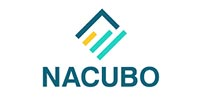November 14, 2025
In times of economic uncertainty, nonprofits face unique financial challenges that require strategic preparation and proactive measures. This article outlines key ways nonprofits can bolster their financial resilience and ensure sustainability during uncertain times. As economic landscapes shift, nonprofits must anticipate potential revenue drops and increased demand for services. Implementing robust financial strategies can help organizations remain viable and effective amidst such changes. Ensuring financial health is crucial since America's 1.3 million charitable nonprofits, according to the National Council of Nonprofits, play vital roles in feeding, healing, sheltering, educating, nurturing, and inspiring communities.
1. Develop a Comprehensive Financial Contingency Plan
Developing a comprehensive financial contingency plan is essential for nonprofits to navigate economic uncertainty. The first step is assessing the current financial position of the organization to understand its strengths and vulnerabilities. By conducting a detailed financial analysis, nonprofits can identify potential areas of concern that might need immediate attention. Moreover, this assessment helps highlight critical expenditure areas that require safeguarding during financial downturns. Prioritizing these steps will aid nonprofits in crafting a tailored response strategy that addresses revenue shortfalls effectively.
Identifying potential risks and scenarios that could impact the nonprofit's financial health is another crucial step. This involves considering various external factors such as economic volatility, donor behavior, and policy changes. By anticipating these risks, nonprofits can prepare appropriate response strategies that cater to different scenarios. For instance, establishing emergency protocols for sudden funding shortfalls can help maintain operations without sacrificing service quality. Reviewing and updating financial policies regularly ensures that organizations remain agile and responsive to changing economic conditions.
Determining critical expenditure areas is vital to ensure that essential operations are maintained. During financial uncertainties, nonprofits must prioritize spending in areas that directly support their mission and impact. Establishing a response strategy for revenue shortfalls involves developing plans to cut costs without compromising on service delivery. Regularly reviewing financial resources and implementing targeted expense reductions can result in efficient fiscal management. By taking these proactive measures, nonprofits can safeguard their financial stability and continue serving their communities effectively.
2. Diversify Funding Sources
Diversifying funding sources is a strategy that can significantly enhance a nonprofit's financial stability. One effective approach is expanding the donor base by reaching out to new supporters who align with the organization's mission. Nonprofits can also explore corporate partnerships to secure investments from businesses that share their values. Forging these relationships not only diversifies revenue streams but also increases visibility and credibility. Moreover, applying for grants and endowments provides access to funds earmarked for specific projects or operational support.
Implementing earned income strategies allows nonprofits to generate revenue through creative means that align with their mission. These strategies can include activities such as selling merchandise, licensing products, or providing services for a fee. Income generated from these activities can be reinvested into the organization, enhancing overall financial strength while staying true to its core objectives. Additionally, utilizing crowdfunding platforms offers a modern and engaging way to gather donations from a broader audience, further diversifying funding streams. This approach enables small contributions to accumulate into substantial support, driving community involvement and investment.
According to the National Council of Nonprofits, America's 1.3 million charitable nonprofits play a pivotal role in society, which underlines the importance of financial resilience. Utilizing diverse funding sources contributes to a more stable financial base, enabling these organizations to focus on their missions of feeding, healing, sheltering, educating, nurturing, and inspiring communities. By leveraging multiple avenues for financial support, nonprofits can mitigate the impact of any single source's decline. This preparation helps ensure that nonprofits remain effectively adaptable and continue thriving, even amid economic uncertainty. Ultimately, diversified funding serves as a safeguard, granting nonprofits the flexibility to persevere through economic challenges while continuing to make significant positive impacts.
3. Strengthen Financial Reserves
Strengthening financial reserves is a pivotal strategy for ensuring nonprofit sustainability in times of economic volatility. Setting clear reserve targets and goals is essential for building a robust financial foundation. Nonprofits should determine an appropriate reserve level that reflects their operating needs, risk appetite, and mission-critical priorities. Allocating surplus funds to reserves during favorable financial periods can bolster these accounts, creating a buffer against economic downturns. Establishing an emergency fund is another critical aspect of reserve planning, providing additional resources for unexpected financial challenges.
Developing an investment policy for reserves is a strategic step that helps increase the value of these funds over time. This policy should outline the organization's risk tolerance, asset allocation strategy, and investment goals. By prudently managing reserves, nonprofits can ensure the preservation and growth of these resources. Monitoring reserve levels regularly ensures alignment with financial goals and allows for timely adjustments as necessary. This proactive approach to reserve management provides organizations with the flexibility and confidence to navigate periods of financial uncertainty.
4. Tighten Financial Controls and Reporting
Tightening financial controls and reporting is critical for maintaining accountability and transparency within nonprofit organizations. Conducting regular financial audits ensures that all financial activities are accurately recorded and substantiated. These audits provide an objective assessment of a nonprofit's financial health, highlighting areas that require improvement or pose potential risks. Implementing robust internal controls further strengthens financial oversight by establishing clear procedures and checks that prevent fraud and errors. Consistent adherence to sound financial practices enhances stakeholder trust and confidence in the organization's operations.
Transparent financial reporting is a crucial component of effective financial governance in nonprofits. Openness about financial activities and outcomes fosters trust among donors, partners, and beneficiaries. Using financial management software facilitates streamlined reporting and analysis, enabling timely access to accurate data for decision-making. This technology enhances efficiency by automating routine financial tasks, allowing organizations to focus on strategic financial planning. Training staff on financial best practices equips them with the knowledge and skills needed to maintain high standards of
financial management while adapting to evolving economic conditions.
5. Optimize Operational Efficiency
Optimizing operational efficiency is integral to maximizing a nonprofit's impact while minimizing costs. Conducting efficiency audits provides valuable insights into areas where resources can be better allocated and processes streamlined. By evaluating and refining operational workflows, nonprofits can identify opportunities to enhance productivity and reduce waste. Leveraging technology further boosts efficiency by automating routine tasks and enabling seamless communication and collaboration. This technological integration enables organizations to focus on high-impact activities that directly support their mission-driven goals.
Outsourcing non-core functions is another strategy that fosters operational efficiency by allowing nonprofits to concentrate on their core competencies. Engaging third-party specialists for specific tasks can also bring fresh perspectives and enhance overall performance. While outsourcing saves costs and resources, it is vital to ensure that partners align with the nonprofit's values and standards. Additionally, fostering a culture of continuous improvement encourages staff to actively seek ways to enhance efficiency and effectiveness. By promoting innovation and creativity in everyday processes, nonprofits can build adaptive systems that respond dynamically to changing needs.
By employing these strategies, nonprofits can enhance their financial resilience and adapt to economic uncertainties. Proactive planning and adaptive strategies can ensure that nonprofits continue to thrive and fulfill their missions, even in challenging times. By building comprehensive financial contingency plans, diversifying funding streams, strengthening financial reserves, tightening controls, optimizing operations, and engaging in strategic planning, nonprofits can effectively navigate economic instability. This multifaceted approach empowers organizations to sustain their vital services and make a positive difference in the lives of countless individuals and communities. Contact Richards & Associates today for more information.



